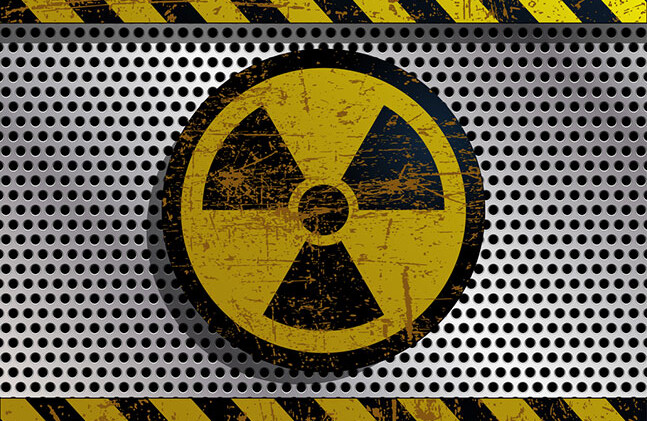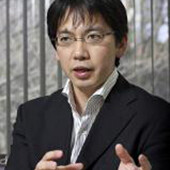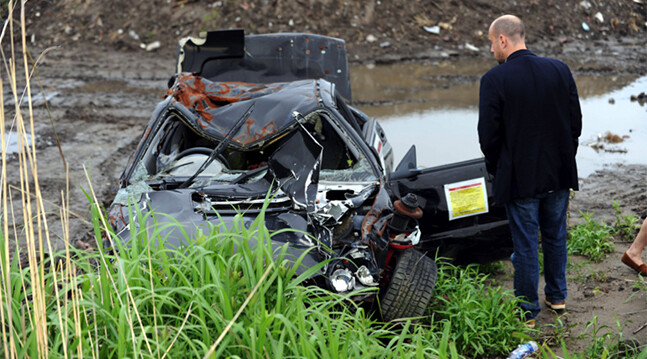Based on a paper presented to the Carnegie Council's Global Ethics Fellows Fifth Annual Conference, "An Ethical Dialogue between Asia and the West: Philosophical Traditions, Moral Contentions, and the Future of US-Asia Relations." The Conference took place in New York City, October 20-23, 2015.
Introduction
To mark the 70th anniversary of the end of World War II, a series of key events was held in 2015, including the Review Conference of the Parties to the Treaty of the Non-Proliferation of Nuclear Weapons (NPT) and the 21st Conference of the Parties to the United Nations (UN) Convention on Climate Change. The connection between these conferences appears to be obscure, yet the nuclear power–weapons crossover is connected to current disputes in ethics and international affairs.1 If there is willingness and capability, nuclear materials and technology may be used for military and civil use interchangeably. Military–civic relations in nuclear technology and associated risk should be considered more broadly.
The 1968 NPT regime was structured according to the three pillars of horizontal nonproliferation, vertical nonproliferation, and peaceful uses of nuclear energy. Despite nations having equal rights to nuclear energy development for civic uses, the inherent asymmetry between unequal rights to nuclear weapon possession has remained unresolved, and has become more dangerous with the changing international environment. The three dimensions of sustainable development—social, economic, and environmental—have been recognized since the 1972 UN Conference on the Human Environment, but are not yet well integrated.
This paper traces the competing moral claims in the power–weapons crossover across time, and argues that the historically constructed ideas of "nonproliferation" and "atoms for peace" have been deconstructed and reconstructed with three key conjunctures: the end of the Cold War, the September 11, 2001 attacks, and the March 11, 2011 triple disaster in Japan. In so doing, this paper reviews the debates of the 1996 International Court of Justice (ICJ) Advisory Opinion in The Hague, the 2006 Reykjavik Summit 20th anniversary conference in the United States, and the 2011 Ethics Commission for a Safe Energy Supply in Germany, respectively. Taken together, these events may transform the oligopolistic rights and obligations of the "nuclear club" into more democratic governance in a post-nuclear age.
After the Cold War
The end of the Cold War created a chance for the UN General Assembly to challenge the Security Council by seeking an advisory opinion from the ICJ on the question of the legality of nuclear weapons: "Is the threat or use of nuclear weapons in any circumstances permitted under international law?" The fact that the initial request from the World Health Organization was not accepted by the ICJ implied that there was a jurisdictional wall between the military implications for humanitarian concerns and the civil consequences for human rights concerns, especially those of health and the environment. However, the court explained that “Respect for the environment is one of the elements that go to assessing whether an action is in conformity with the principles of necessity and proportionality" (para 31) in international humanitarian law.2 The advisory opinion was described by Mohammed Bedjaoui, the then ICJ President, as a product of "a Cornelian dilemma" between competing moral claims.3 The crucial contests can be summarized in terms of self-defense, deterrence, and arms control, all of which were effectively justified during the Cold War.4
The first dilemma concerns humanitarian law versus the UN Charter. The court resolved the issue with a split vote, decided by President Bedjaoui's casting vote. "The threat or use of nuclear weapons would generally be contrary to the rules of international law applicable in armed conflict, and in particular the principles and rules of humanitarian law; however, in view of the current state of international law, and of the elements of fact at its disposal, the court cannot conclude definitively whether the threat or use of nuclear weapons would be lawful or unlawful in an extreme circumstance of self-defense, in which the very survival of a state would be at stake" (emphasis added). Unlike the use of biological and chemical weapons, which is legally prohibited, the use of nuclear weapons is not prohibited by any international law, either positive or customary. At the same time, it was pointed out that humanitarian law distinguishes between combatants and noncombatants, and that any weapons that would inflict harm on civilians and unnecessary suffering on combatants are prohibited or forbidden. Thus, it can be argued that the inevitable consequences of the use of nuclear weapons may be against humanitarian law. On the other hand, Article 51 of the UN Charter recognized that every member state has "the inherent right of individual or collective self-defense if an armed attack occurs..." Although all the judges recognized that self-defense exists, Bedjaoui could have voted against it because of the adverb "generally," and because the use of nuclear weapons could result in the destruction of humanity. As Bedjaoui expressed in his declaration annex to the advisory opinion, "By its very nature the nuclear weapon, a blind weapon, therefore has a destabilizing effect on humanitarian law, the law of discrimination which regulates discernment in the use of the weapons" (para 20, emphasis original) and "the use of nuclear weapons by a state in circumstances in which its survival is at stake risks in its turn endangering the survival of all mankind" (para 21).
The second dilemma is concerned with deterrence. Nuclear deterrence is the policy of developing a nuclear arsenal so that other countries would not use their nuclear weapons. In contrast to compellence, which is intended to force an opponent to take action, deterrence is the policy of discouraging an adversary from taking action by instilling fear. Noting that many states adhered to deterrence even after the Cold War, the court did not pronounce on the legality of nuclear deterrence itself. However, with the coupled notions of "threat" and "use," it was mentioned that "no state—whether or not it defended the policy of deterrence—suggested to the court that it would be lawful to threaten to use force if the use of force contemplated would be illegal" (para 47). The court argued that "In order to be effective, the policy of deterrence, by which those states possessing or under the umbrella of nuclear weapons seek to discourage military aggression by demonstrating that it will serve no purpose, necessitates that the intention to use nuclear weapons be credible" (para 48). If such possession of nuclear weapons is identified as illegal under humanitarian law and the UN Charter, nuclear deterrence even in a time of peace can become an unlawful "threat."
The third dilemma, which led to a call for nuclear disarmament, stems from the above competing claims over the legality of nuclear weapons. The court considered that, "In the long run, international law, and with it the stability of the international order which it is intended to govern, are bound to suffer from the continuing difference of views with regard to the legal status of weapons as deadly as nuclear weapons. It is consequently important to put an end to this state of affairs: the long-promised complete nuclear disarmament appears to be the most appropriate means of achieving that result" (para 98). Thus, the court unanimously decided that "There exists an obligation to pursue in good faith and bring to a conclusion negotiations leading to nuclear disarmament in all its aspects under strict and effective international control" (Point F).
After 9/11
The September 11, 2001 attacks added another ethical agenda in the power–weapon crossover in nuclear security. Nonproliferation ethics between state actors have spread to nuclear security discourses, which involve non-state actors. Barack Obama mentioned in his Prague speech in 2009, "In a strange turn of history, the threat of global nuclear war has gone down, but the risk of a nuclear attack has gone up." According to the International Atomic Energy Agency's Illicit Trafficking Database (ITDB), illicit nuclear trafficking incidents peaked in 2006, when the conference on implications of the Reykjavik Summit on its 20th anniversary was convened at Hoover Institute.5 The Wall Street Journal article written by the former Cold War conservatives—Shultz, Perry, Kissinger, and Nunn—who attended this conference inspired Obama's presidential election campaign in 2008.6 Following Johan Galtung's categorization, the key dilemmas will be reviewed in terms of "war" as attacks on military forces by other military forces, "terrorism" as attacks on civilians by civilians, "state terrorism" as attacks on civilians by military forces, and “guerrilla” war as attacks on military forces by civilians.7
The September 11, 2001 attacks and the exposure of Abdul Qadeer Khan's network in 2004 revealed nuclear threats and risks involving non-state actors in terrorism and the black market in the globalized world. The Wall Street Journal authors warned that "non-state terrorist groups with nuclear weapons are conceptually outside the bounds of a deterrent strategy and present difficult new security challenges." This perception, which has led to bipartisan efforts towards nuclear disarmament, has become consistent with "America's moral heritage" of democratization and market liberalization. It should also be mentioned that former General Secretary of the USSR Mikhail Gorbachev, who had a similar vision of nuclear disarmament to that of former U.S. President Ronald Reagan, experienced the Chernobyl disaster several months before the Reykjavik summit in 1986. For Gorbachev, both Chernobyl and Reykjavik were "equal in [their] effect on shaking the foundations on which the post-war world was built."8 Market globalization also challenged nuclear safeguards and security. While the moral claim for democracy and market liberalization requires a voluntary assurance mechanism,9 the assumption of a healthy market society would become erroneous in an illiberal nuclear black market.
Shultz et al. also mentioned that the mutual assured destruction of Soviet–American deterrence would not work with increasing horizontal proliferation worldwide, including Iran and North Korea. This is perhaps partly because new nuclear armed states had little experience of safeguards, and partly because "rogue states" with nuclear capacity may engage in state terrorism or state-sponsored terrorism against people. The conference participants were worried about the use of "dirty bombs" rather than nuclear missiles.10 However, the military intervention and counter-terrorism measures based on faulty evidence for weapons of mass destruction in Iraq, which also produced civilian casualties, posed a serious legitimacy question for the "war on terror."
Another conference participant called for the strengthening of the rule of law in "failed states."11 The moral position of nonmilitary anti-terrorism measures stems from the perception that the causes of terrorism are economic, political, social, and cultural, rather than military. The root causes of guerrilla attacks on the state may be poverty and political-cultural misunderstanding. Winning the people rather than winning the guerilla war is more important in counterinsurgency operations. When the state fails to win the people's support, nuclear security will also become fragile. Direct action by peace and environmental activists against nuclear facilities is another example of moral disputes. When there is illegal entry into nuclear facilities, nonviolent direct action in protests for nuclear disarmament and nuclear safety, or expressions of skepticism over the state's sincerity, the state cannot win the people.
After 3/11
The March 11, 2011 triple disaster of an earthquake, a tsunami, and a nuclear crisis in Japan triggered another ethical debate over energy transition. Instead of Japan, with its experiences of Hiroshima, Nagasaki, and Fukushima, it was Germany that established the Ethics Commission for a Safe Energy Supply.12 This is perhaps because Germany had a longer history of antinuclear movements and a Green Party, as well as more perceived threats from Chernobyl and the former East Germany's Soviet technologies.13 The debate on energy transition by Germany's Ethics Commission will be examined in terms of nuclear divestment, energy saving, and reinvestment in renewables.
According to the commission, the changed perception of risks, rather than risk itself, after the nuclear meltdown in the high-tech country led to a proposal for withdrawal from nuclear energy. The peaceful use of nuclear energy was a "huge future utopia," and the question for the commission was "withdrawal sooner or later?" rather than "nuclear power, yes or no?" While the commission's report mentioned proliferation and terrorism issues, the basic conflict over the ethical positions represented was categorical rejection versus relativizing assessment. For the categorical approach, a preventative strategy was suggested to rule out non-assessable risks. For the relativizing approach, ethical considerations could help make rational and fair risk assessments. Thus, "both positions reach the same conclusion with respect to nuclear energy; ending the use of nuclear plants as soon as their capacity can be replaced by less risky energy sources in accordance with ecological, economic and social compatibility."
It is also pointed out that divestment of nuclear energy as well as fossil fuels should be accompanied by improved energy efficiency and innovative expansion of renewables. Alleged moral conflicts with nuclear withdrawal may include environmental (climate change), social (cost distribution), and economic (security of supply, competitiveness, import dependence, etc.) conflicts. Considering these conflicting objectives associated with nuclear phaseout, the commission focused on efficient energy use on the demand side from an ethical perspective. The dilemma of energy efficiency is the Jevons paradox, which states that increased energy results in increased demand and therefore consumption. To prevent this paradox, ethics of "smart" consumers at the micro level or regulation at the macro level will be needed.
The commission was also cautious in expressing the view that nuclear withdrawal could not simply be replaced by another accelerated expansion of renewable energy sources because of the limits of natural habitats and technical feasibility. It also examined whether renewables would contribute to industrial competitiveness and job creation. The availability of less risky energy sources led to the unanimous conclusion by the commission that Germany had an opportunity to replace nuclear energy with renewables that were ecologically, economically, and socially compatible.
Conclusions
We should avoid the conceptual distinction of nuclear weapons and nuclear energy, because this dichotomy obscures moral claims on and the reality of nuclear detonation. It is necessary to reconstruct an ethical framework for the power–weapons crossover in humanitarian and human rights terms.
The failure of the existing nonproliferation regime to address the grave threats of nuclear weapons has culminated in a series of humanitarian impact conferences since 2013. It can be concluded that the use and threat of nuclear weapons would violate international humanitarian law, and that dependence on nuclear weapons for national security undermines moral claims for human and planetary security. In terms of immediate and long-term catastrophic humanitarian harm, no distinction can be made between nuclear weapons and nuclear power plants.
Climate change was used as a moral justification for nuclear power. With alternative, less risky energy sources available, the dependence on nuclear power for mitigating climate change no longer provides us with a persuasive moral basis. Moral claims on energy have shifted to safe energy sources and are closely associated with human rights impacts on the social, environmental, and economic dimensions of sustainable development. They are also embedded in the Agenda 2030 for Sustainable Development. Although the military–industry complex remains resilient, the only ultimate solution to nuclear danger and the best disaster prevention is a nuclear-free world in both military and civil terms.
NOTES
1 Fumihiko Yoshida, "Absolutely Uncontrollable Weapons: An Ethical Approach to Defusing Nuclear Risks," Journal of Social Science 77(2014): 31–50.
2 International Court of Justice, "Legality of the Threat or Use of Nuclear Weapons," Advisory Opinion (July 8, 1996).
3 Fumihiko Yoshida, "NUKE JUDGMENT: Former ICJ president reveals 'nightmare' in 1996 landmark opinion on nuclear weapons,” Asia & Japan Watch (August 1, 2014).
4 Eiichi Sugie, "Nuclear Weapons and the International Court of Justice," Chukyo Hogaku 32:2 (1997): 1-24.
5 George P. Shultz and Sidney D. Drell eds., Implications of the Reykjavik Summit on Its Twentieth Anniversary: Conference Report (Stanford: Hoover Institution Press, 2007).
6 George P. Shultz, William J. Perry, Henry A. Kissinger, and Sam Nunn, "A World Free of Nuclear Weapons," The Wall Street Journal (Jan 4, 2007): A15.
7 Katsuhiko Mori, "Civil Society and Common Security: On the Philosophical Roots of Galtung's Peace Research," Peace Reports 4:1 (December 2006): 4. It should be noted that terrorism is a criminal act, not an act of war.
8 Thomas Blanton and Svetlana Savranskaya, "Reykjavik: When abolition was within reach," Arms Control Today (September 30, 2011).
9 James Timbie, "Six-Country Concept for a Multilateral Mechanism for Reliable Access to Nuclear Fuel," in Shultz et al., Implications of the Reykjavik Summit, 147–152.
10 Thomas H. Henriksen, "The Legacy of Reykjavik: Preserving a Security Option for Dealing with Madmen, Missiles, and Missile Defense, in Shultz et al., Implications of the Reykjavik Summit, 38–41.
11 Thomas Graham Jr., "Nuclear Weapons Elimination: A Process," in Shultz et al., Implications of the Reykjavik Summit, 31.
12 Ethics Commission for Safe Energy Supply, Germany's Energy Transition: A Collective Project for the Future (Berlin, May 30, 2011).
13 Miranda A. Schreurs, "The Ethics of Nuclear Energy: Germany's Energy Politics after Fukushima," Journal of Social Science 77(2014): 9–29.


